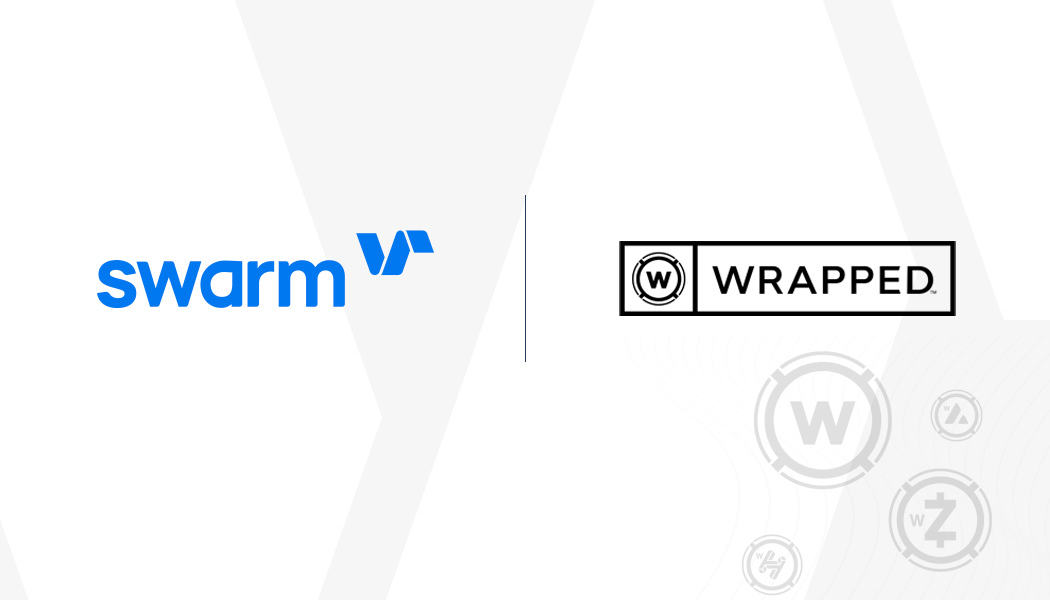Swarm and Wrapped entered into a partnership on September 7 to improve Wrapped.com’s existing services for transferring cryptocurrencies between different blockchain networks. The main goal is to make it easier to convert, or “wrap,” cryptocurrencies for use in decentralized finance, commonly known as DeFi.
This cross-chain collaboration between Wrapped.com and Swarm could be a pivotal point in shaping the future of this market. As we delve deeper, we’ll explore Swarm’s role in this collaboration and how custody-based solutions are shaping the future of wrapped crypto and DeFi.
Cross-Chain Technology: How Does Wrapped.com Use It?
Cross-chain technology refers to the ability to transfer assets and information between different blockchain networks.
Wrapped.com specializes in using cross-chain technology to provide high-speed infrastructure, specifically for institutional investors. Their approach involves holding cryptocurrencies in a secure, custodial environment.
From there, a “wrapped” version of these assets is minted onto other networks, making them more easily accessible for trading and other DeFi applications.
Unpacking the Crypto Partnership: Swarm
Berlin-based Swarm operates as a regulated DeFi platform, overseen by German financial authority BaFin. This regulation along with a secure environment for holding and transferring assets is pivotal for many companies dealing with financial transactions in the crypto space.
So, why does this matter for Wrapped.com?
Swarm’s regulated environment offers a safe haven for Wrapped’s crypto assets before they are wrapped and transferred to another blockchain. In simple terms, it adds an extra layer of security and regulatory legitimacy to the complex process of moving cryptocurrencies across different networks.
To understand Swarm’s role better in this crypto partnership, we reached out to Philipp Pieper, the co-founder of Swarm.
“We are enabling them to have a regulated custodian that is built on a much more agile technology than the custodians that they’ve been using so far,” he said in an interview with Cryptonews.com. “I think it’s the start of actually having a pretty significant role to play in the cross-chain world.”
Custody-Based Solutions
Custody-based solutions offer a more secure and reliable method for managing cross-chain assets. In this model, assets are held in a regulated custodial environment, reducing the security and regulatory risks commonly associated with smart-contract-based bridges.
By emphasizing security and regulation, custody-based solutions are gaining attention as a preferred method for handling assets across different blockchain networks. It lends greater confidence and trust to the system, making it a compelling choice in the DeFi space.
This view aligns well with the partnership. Initially, Wrapped.com had collaborated with Anchorage, but they have now shifted focus to provide a self-serve API.
A self-serve API allows users to access specific functionalities without manual intervention from the service provider. In the context of Wrapped.com’s shift, the self-serve API will facilitate a more efficient way for customers to bring Bitcoin liquidity into the DeFi market.
“We see a custody-based solution as the future of interoperability for cross-chain assets. We partner with tier one custodians to ensure that all assets are managed in the most secure way possible,” said Ronak Pakzad, co-founder of Wrapped, in a September 7 press release.
The Financial Impact on DeFi
The wrapped bitcoin market currently has a market cap nearing $4.34 billion, a number that highlights the growing interest and adoption of decentralized finance (DeFi) solutions.
A noteworthy aspect of the Wrapped and Swarm partnership is Wrapped’s plan to move $20 million in assets under management (AUM) to European custody. This is a significant move demonstrating a new standard in DeFi, particularly given the robustness of German crypto custody laws.
Regulatory Implications
Germany’s regulatory framework for crypto custody is often cited as one of the most stringent and reliable. This sets a favorable stage for Wrapped.com and Swarm to operate in, as it ensures that both parties adhere to high standards of operation within the DeFi space.
Pieper told CryptoNews.com that he is also an advisor to the German finance minister, and that the partnership with Wrapped was proof that they were on the right track.
“Part of the hypothesis along the way was that this regulatory regime is going to lead to businesses coming to Europe and specifically to Germany and partnerships like Wrapped demonstrates, and underlines that,” he noted. “The government and the regulators are on the right path to legitimize and to bring certain (DeFi) models into the fold.”
Advantages of a Regulated Custodian
As mentioned, using a regulated custodian such as Swarm offers two primary benefits: operational reliability and enhanced security.
“We have a fairly large extent of regulatory proof that we have to deliver to get the status that we have. It’s built on MPC technology,” Pieper explained.
MPC technology, or Multi-Party Computation, is a cryptographic method that allows multiple parties to jointly compute a function over their inputs while keeping them private. The technology is used to enable secure data analysis, privacy-preserving computation, and other similar applications without exposing sensitive information.
In the volatile crypto market, this type of advanced security and operational reliability is essential, reducing the risks associated with technical glitches and human errors.
A regulated custodian also provides added protection against cyber threats, such as hacking and fraud, which are common in the crypto space. This is due to the stringent security and privacy regulations such companies must adhere to. This, in turn, has the potential to ultimately cast a positive light on DeFi and cross-chain operations. Regulatory compliance will only become increasingly important as the DeFi sector grows and comes under greater scrutiny.
Pieper provided more details on how a regulated custodian can add an extra layer of security to digital assets.
“Any misuse of the entire process, which is pretty difficult to do, would lead to a lot of identified people who are known and who are basically part of a trusted organization under regulatory purview,” he said.
What This Means for Investors
The partnership between Wrapped.com and Swarm is not just a step forward for the companies involved; it also opens up new opportunities for institutional investors.
Specifically, these institutions can now wrap and unwrap crypto assets like Bitcoin more securely and efficiently.
Retail investors also now have the opportunity to trade these tokens on DeFi platforms. This is an important move as it makes the benefits of this cross-chain crypto partnership accessible to a broader audience, not just to institutions.
Final Thoughts: Bridging Regulatory Compliance and Technological Flexibility in DeFi
As the DeFi sector evolves, the partnership between Wrapped.com and Swarm presents a nuanced approach to asset management and transfer across blockchain networks. The collaboration not only leverages Swarm’s regulatory compliance but also introduces a technological flexibility that could set new industry standards.
While the crypto space has often been seen as the Wild West of financial markets, Swarm’s BaFin oversight and Wrapped.com’s commitment to secure asset management indicate a maturing industry. This could potentially attract more institutional investors who have been cautious due to regulatory concerns.
Additionally, the introduction of a self-serve API by Wrapped.com is an indication that the company is leaning into automation and efficiency. This move can be interpreted as a response to the growing need for scalable solutions that can handle increasing volumes of cross-chain asset transfers.
The partnership also brings into focus the broader geopolitical implications of regulatory environments. With Germany setting crypto custody laws, the collaboration could act as a pilot test for other companies looking to operate within a regulated European framework. This could, in turn, influence how regulators in other jurisdictions shape their own crypto policies.
While this partnership is one development among many in the rapidly evolving DeFi market, it does offer a model that marries regulatory security with technological agility. Whether this becomes a widely adopted standard or remains an isolated case will depend on a variety of factors, including regulatory evolution and market response.
Read the full article here





